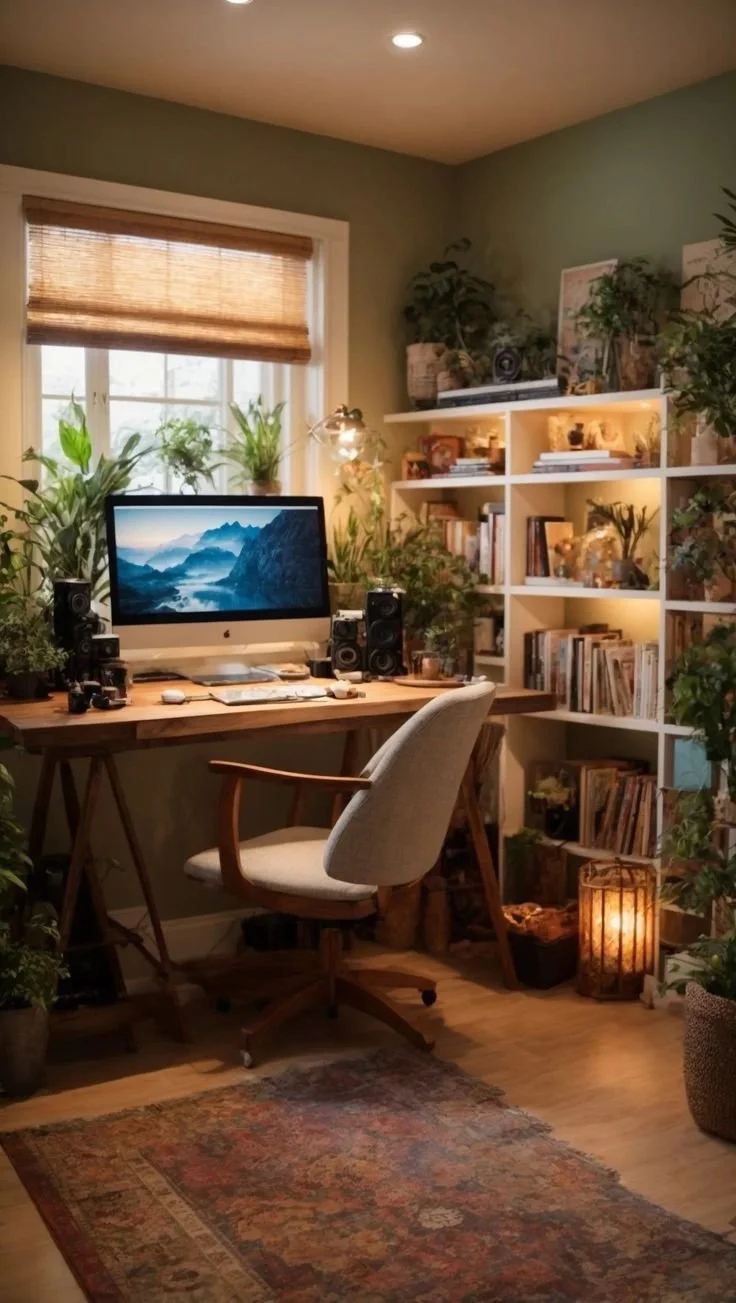
The Power of Rugs and Spatial Zoning:
Creating Defined Spaces for ADHD Brains
If you think rugs are just for keeping your toes cozy, think again. For those navigating the unique challenges of ADHD, rugs are more than decorative— they’re essential tools for creating clarity and order in the space you call home. Let’s explore how spatial zoning, anchored by thoughtfully chosen rugs, can transform a chaotic environment into a sanctuary.
Why Spatial Zoning Matters for ADHD
Spatial zoning is the practice of defining distinct areas within a room to serve different purposes, like separating work zones from relaxation areas. For ADHDers, who often struggle with task-switching and maintaining focus, clear physical boundaries can be a game-changer. Here’s why:
Visual Cues: Our brains respond to visual structure. When your home office or living space has defined zones, your mind instinctively knows what to do in each space. This can help manage the brain’s natural tendency to blur the lines between tasks.
Reduced Overwhelm: ADHD brains can become overstimulated by clutter or undefined spaces. Spatial zoning minimizes decision fatigue by subtly reminding you, “This area is for work,” or “This corner is for unwinding.”
The rug the the left image serves to differentiate the “work zone” from the “relaxed zone. The rug in the right image serves as a similar anchor, but you can see the zones more clearly.
In the right image, take note of the color tone differentiation from zone to zone as well, further serving as a visual thematic cue.
The Rug Solution: More Than Just a Soft Landing
Rugs aren’t just about aesthetics—they act as an anchor in spatial zoning. Here’s how the right rug can do wonders for an ADHD-friendly space:
Visual Boundaries Without Walls: Open spaces are great, but they can lead to mental confusion. A strategically placed rug helps divide areas without physical barriers. For instance, placing a large, textured rug under your couch, and a hard wood flooring under your desk sets apart your “relaxation zone” from your “work zone”, even if the entire space is shared.
Boosting Comfort for Better Focus: The right rug can make a space feel inviting, especially when work feels chaotic. When your workspace feels comfortable and personal, you’re more likely to spend time there. This boosts productivity and makes transitions into deep work smoother.
Creating a Sensory Experience: ADHDers often benefit from sensory grounding. The tactile sensation of a rug underfoot provides subtle feedback that says, “You’re in the relaxed zone now.” Choose rugs with varied textures or calming patterns that provide just enough stimulation without being distracting.
This rug is too small for the “Couch Zone” , and makes the space look disjointed
This rug is promotes a playful but grounded space. The furniture in the room allows for a variety of different rug options, that could vastly impact the vibe of the space. Imaging how much more energetic the space would feel if there was a yellow rug instead?
Tips for Choosing the Perfect Rug for Your Space
Size Matters: A too-small rug can make a space feel disconnected, while an oversized one can blur boundaries. Aim for a rug that fits within your defined zone but leaves enough room around it to delineate its purpose.
Colors and Patterns: Use strategic colors and patterns to enhance the goal of the room. Calming colors can be used to avoid overstimulation and promote rest, while vibrant patterns can be used for creative or leisure zones to energize the mind.
Material and Maintenance: Choose a material that suits your needs—plush for relaxation zones, durable and flat-woven for high-traffic or work areas. ADHDers benefit from low-maintenance, easy-to-clean rugs that won’t add to the mental clutter.
Flat rugs are great for dining areas because they are easy to clean
Bringing It All Together
Creating ADHD-friendly spaces doesn’t have to mean sacrificing style. In fact, thoughtful design choices like spatial zoning with rugs can make your spaces more organized and inviting. Think of rugs as the unsung heroes of intentional design —they guide your attention, set the mood, and help keep the ADHD brain in check.
Ready to revamp your space? Start by thinking about how rugs can define your zones and support your daily flow. With the right choices, you’ll find that your environment isn’t just a backdrop; it’s a tool for your success.
Rugs and zoning are subtle yet powerful allies for ADHDers looking to create spaces that foster focus and peace. So, go ahead—roll out the rug that tells your brain, “You’ve got this!” and watch your productivity soar.









